AVVANCE: Experiencias clínicas en AVV en el contexto del SGM
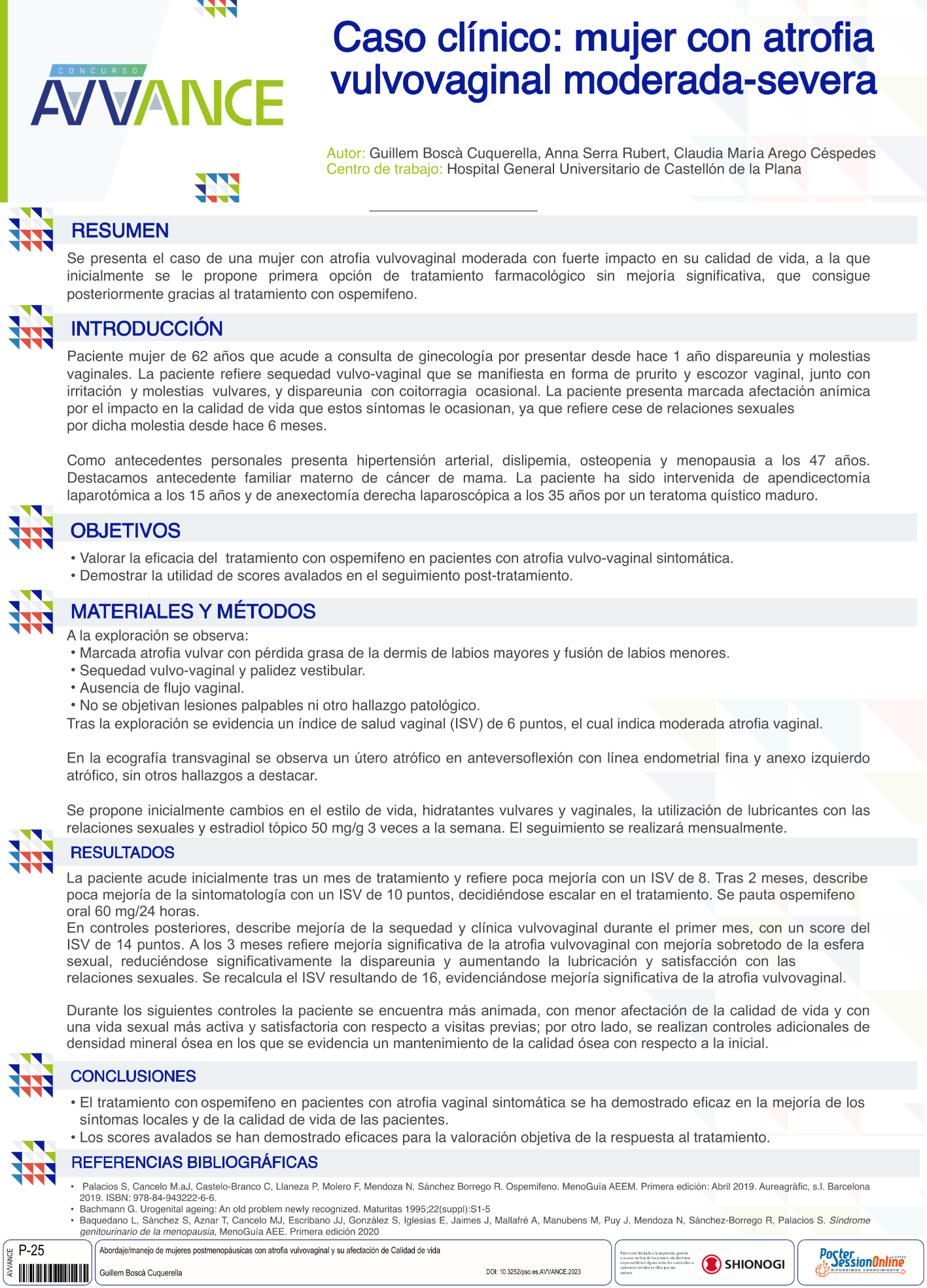

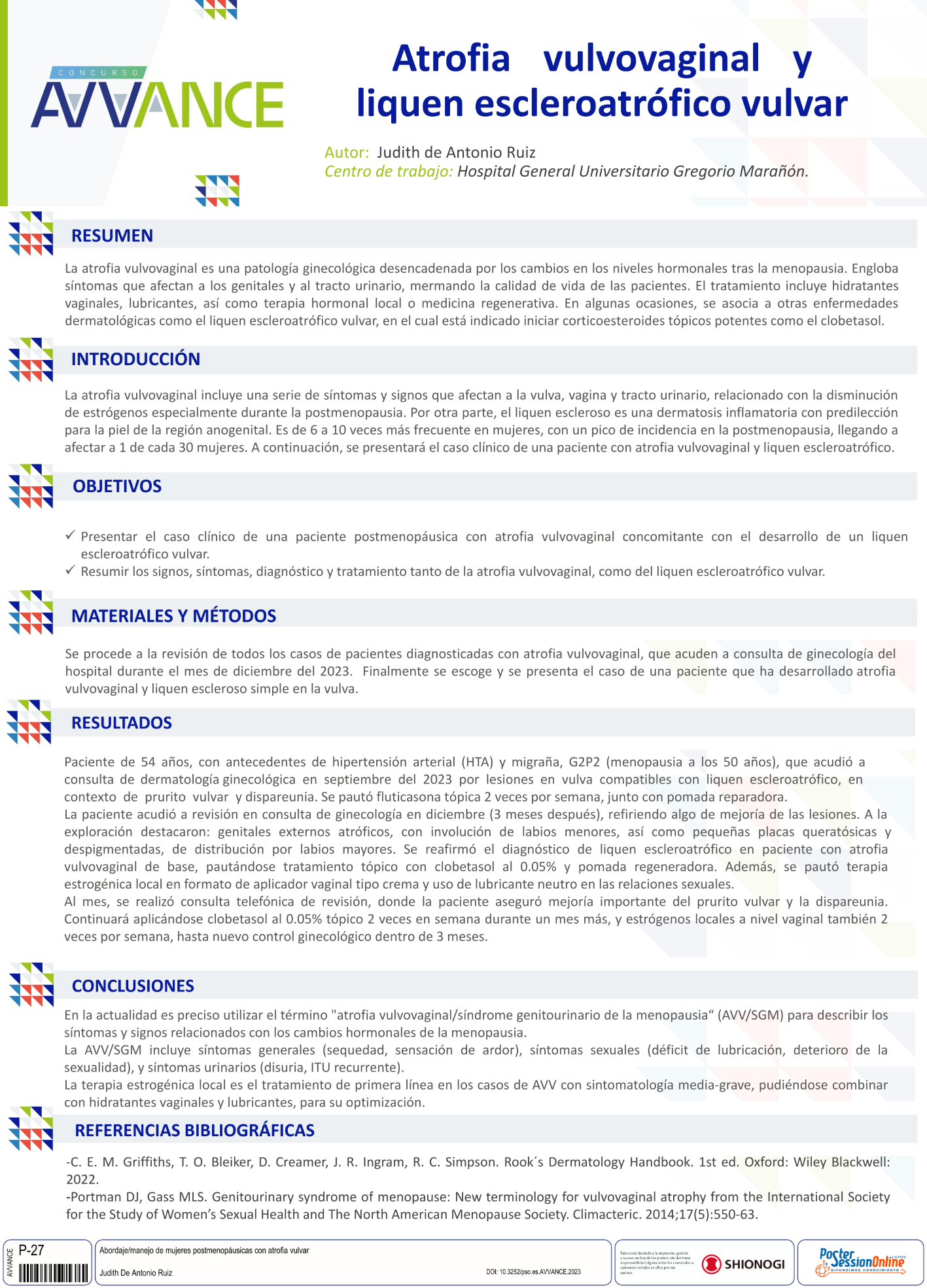
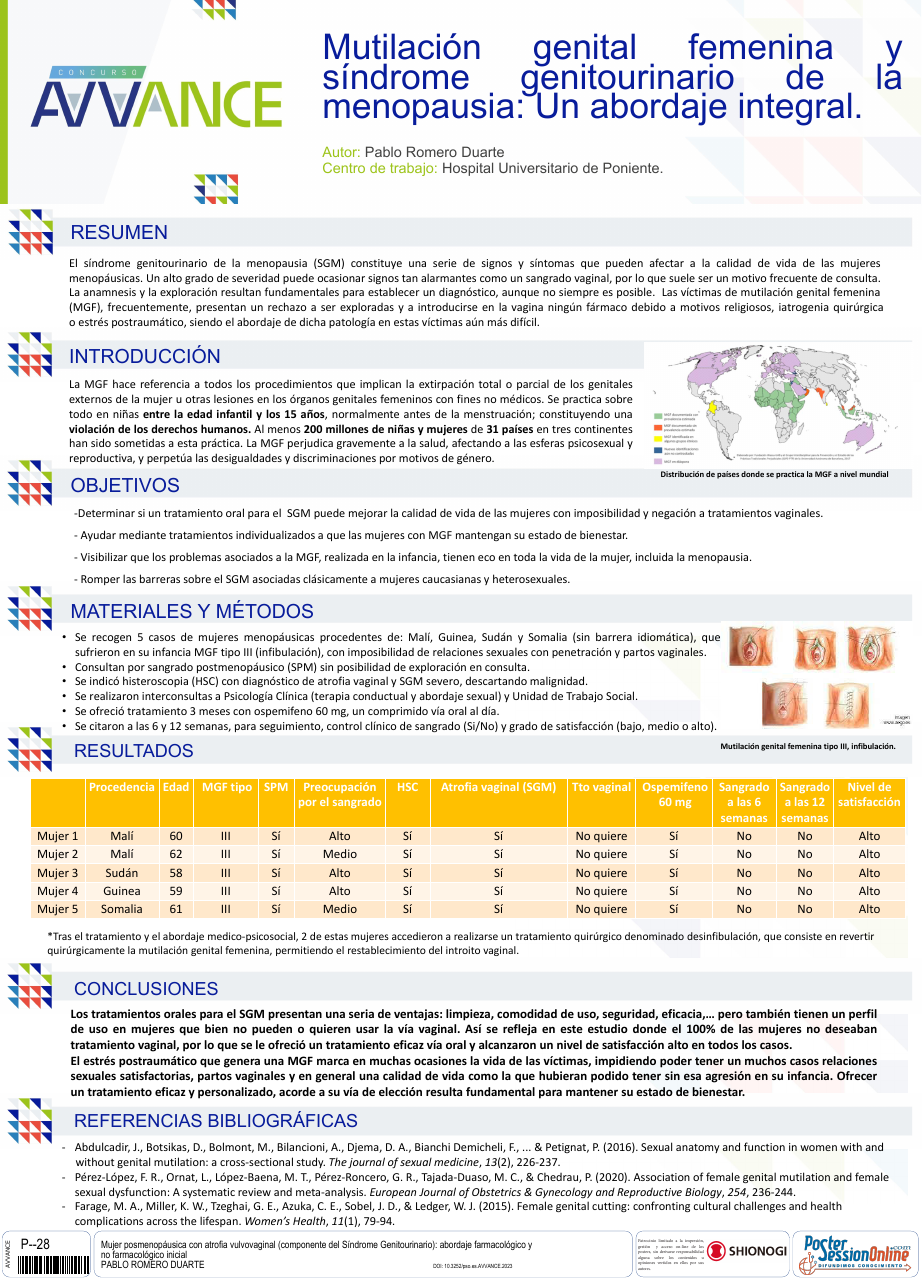
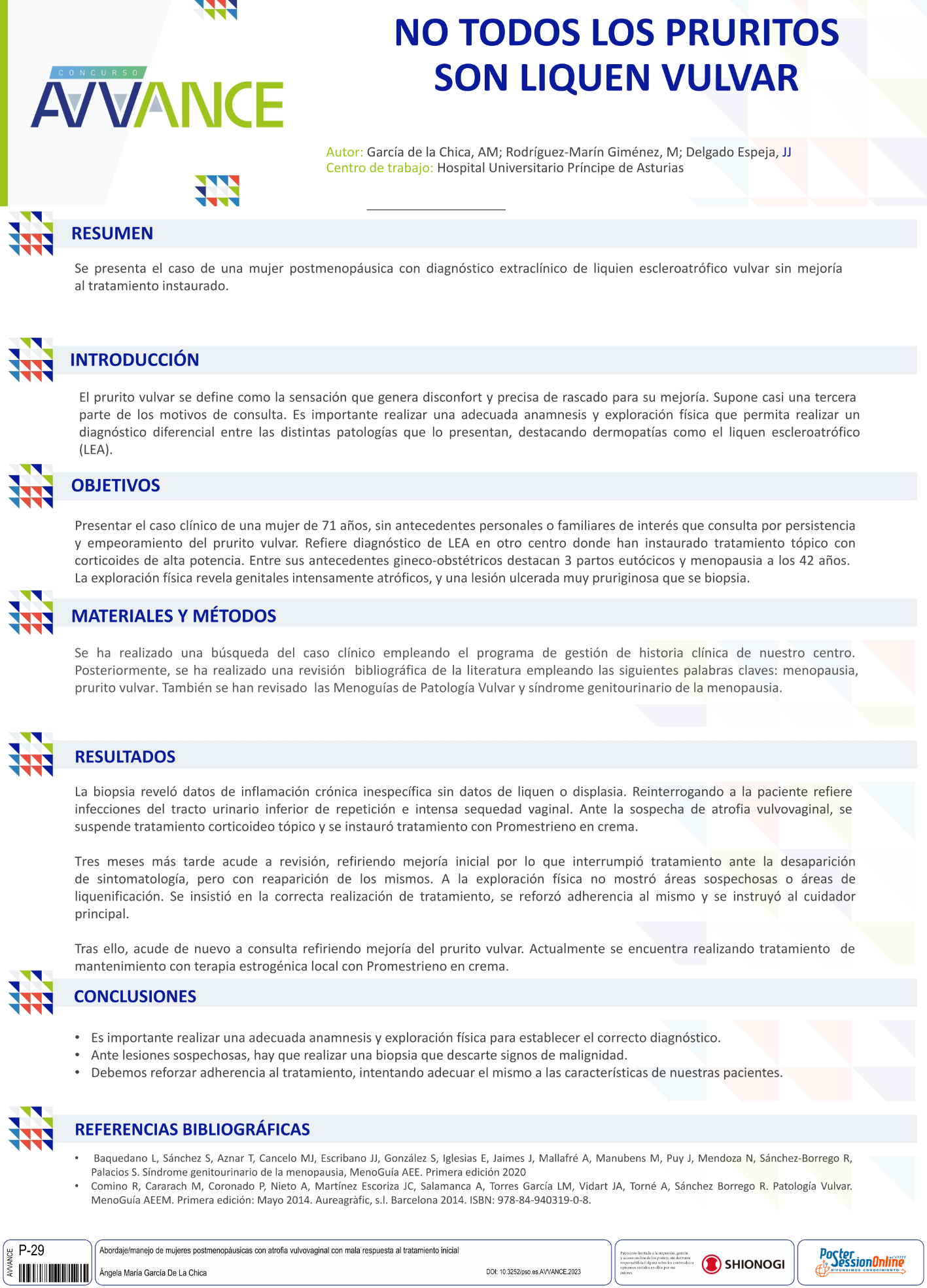
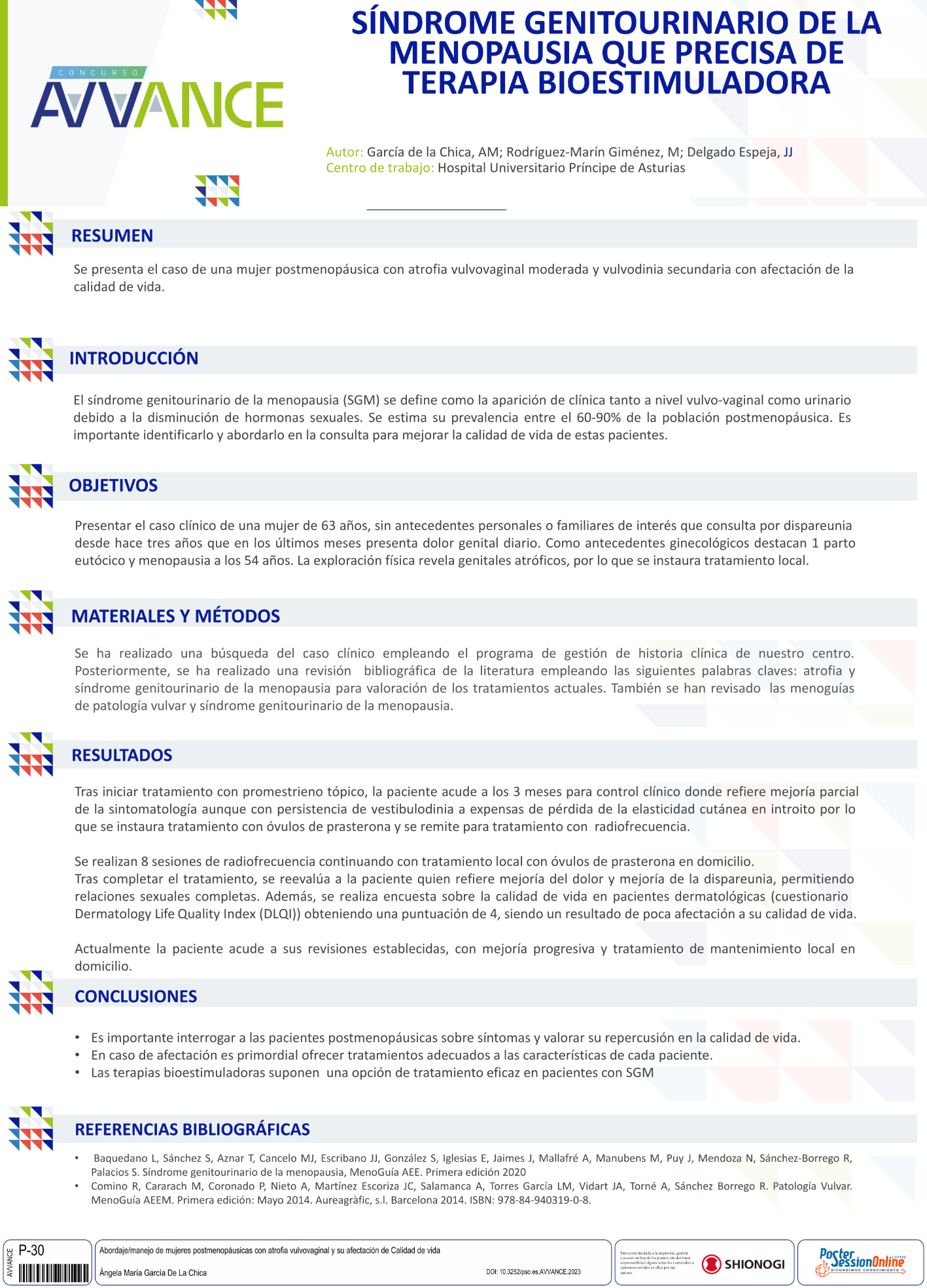
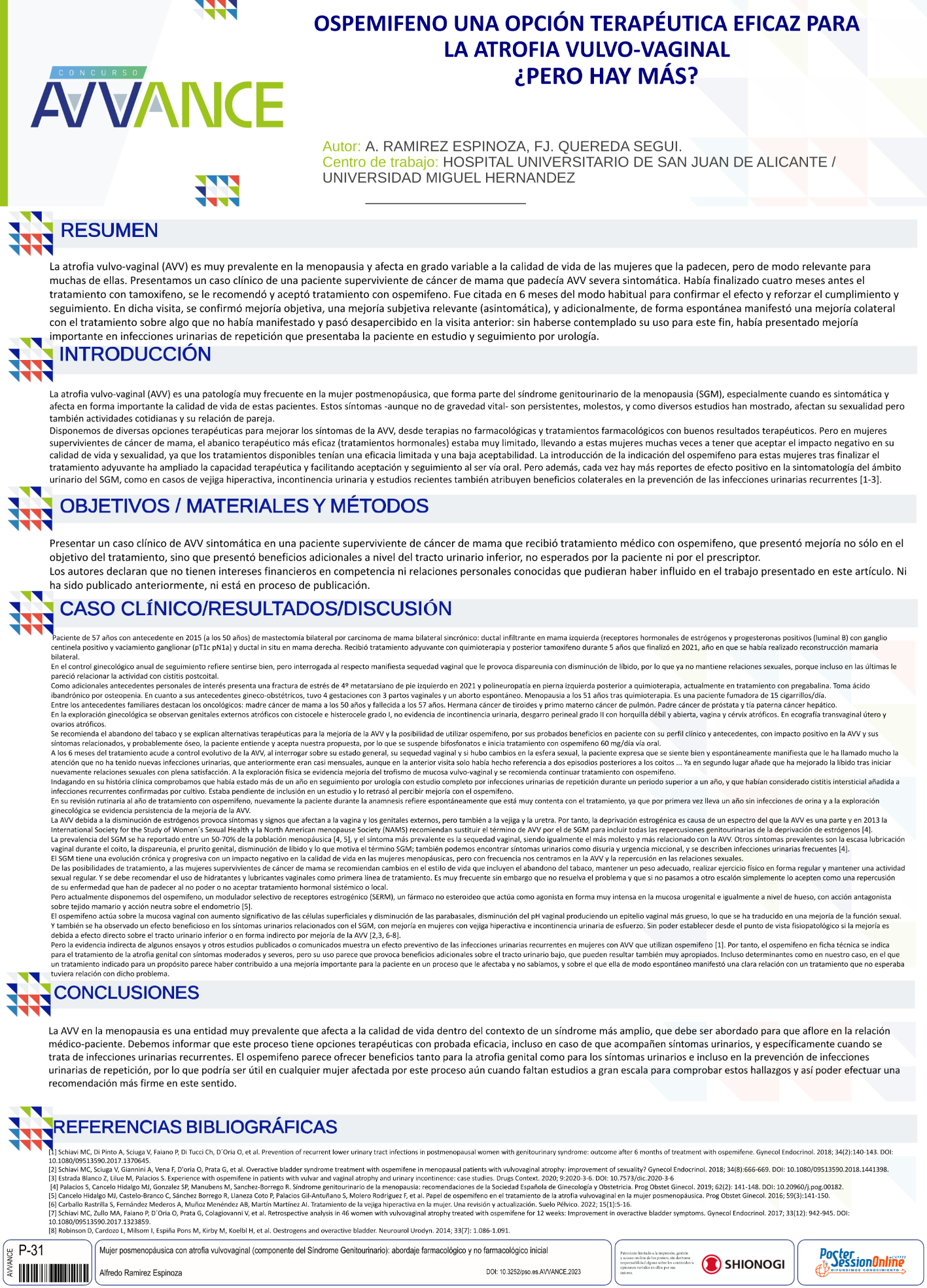
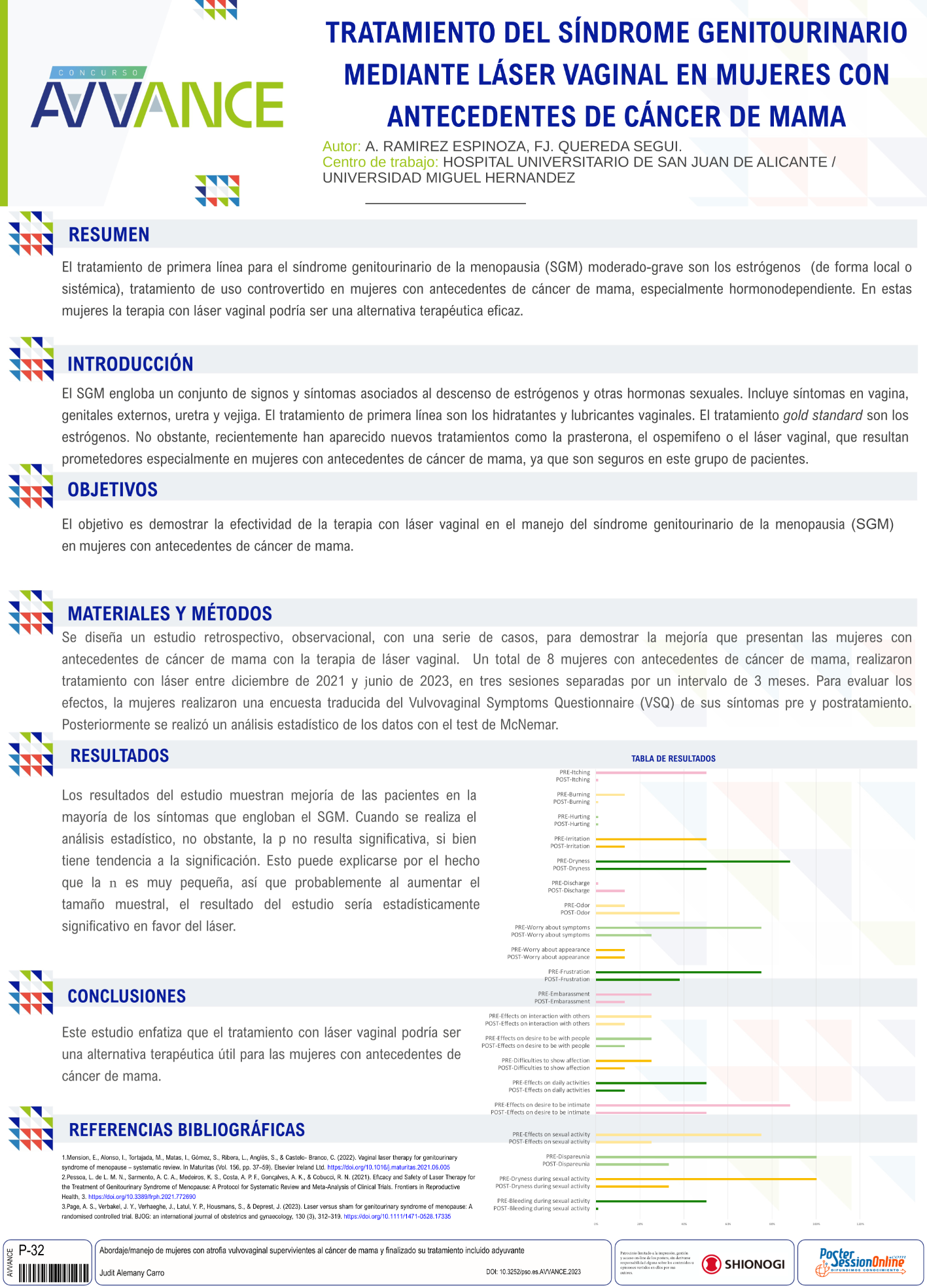
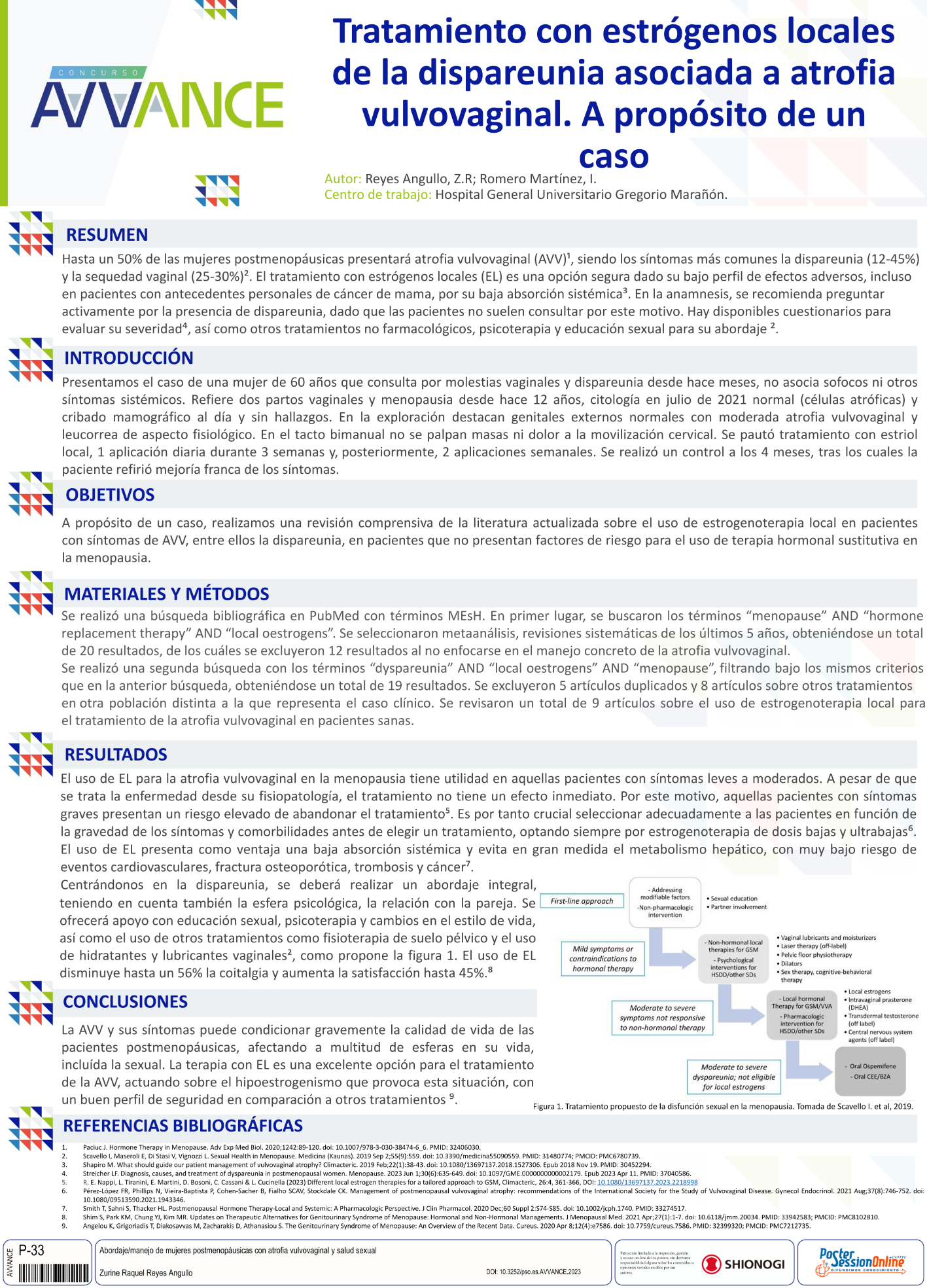
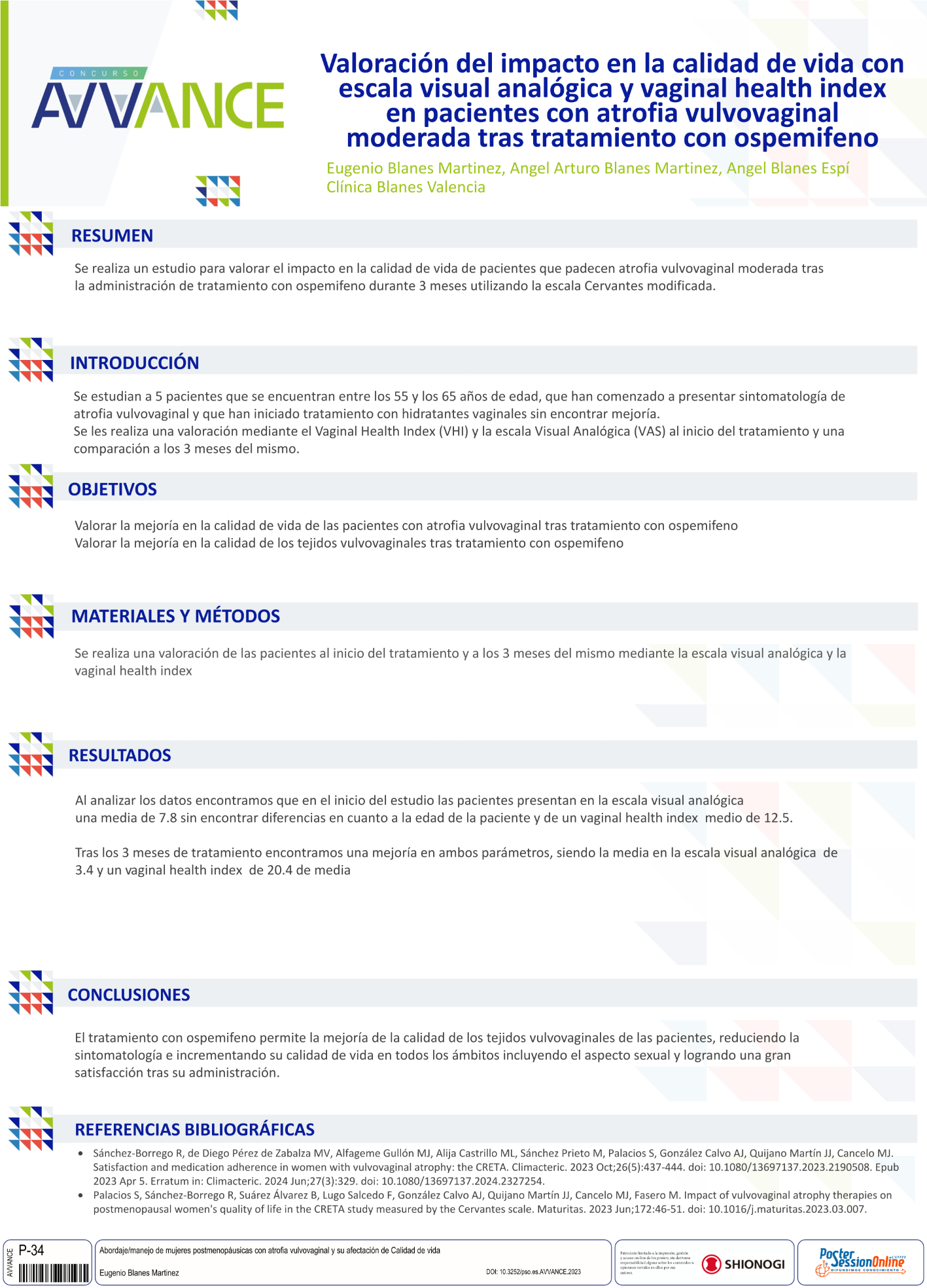
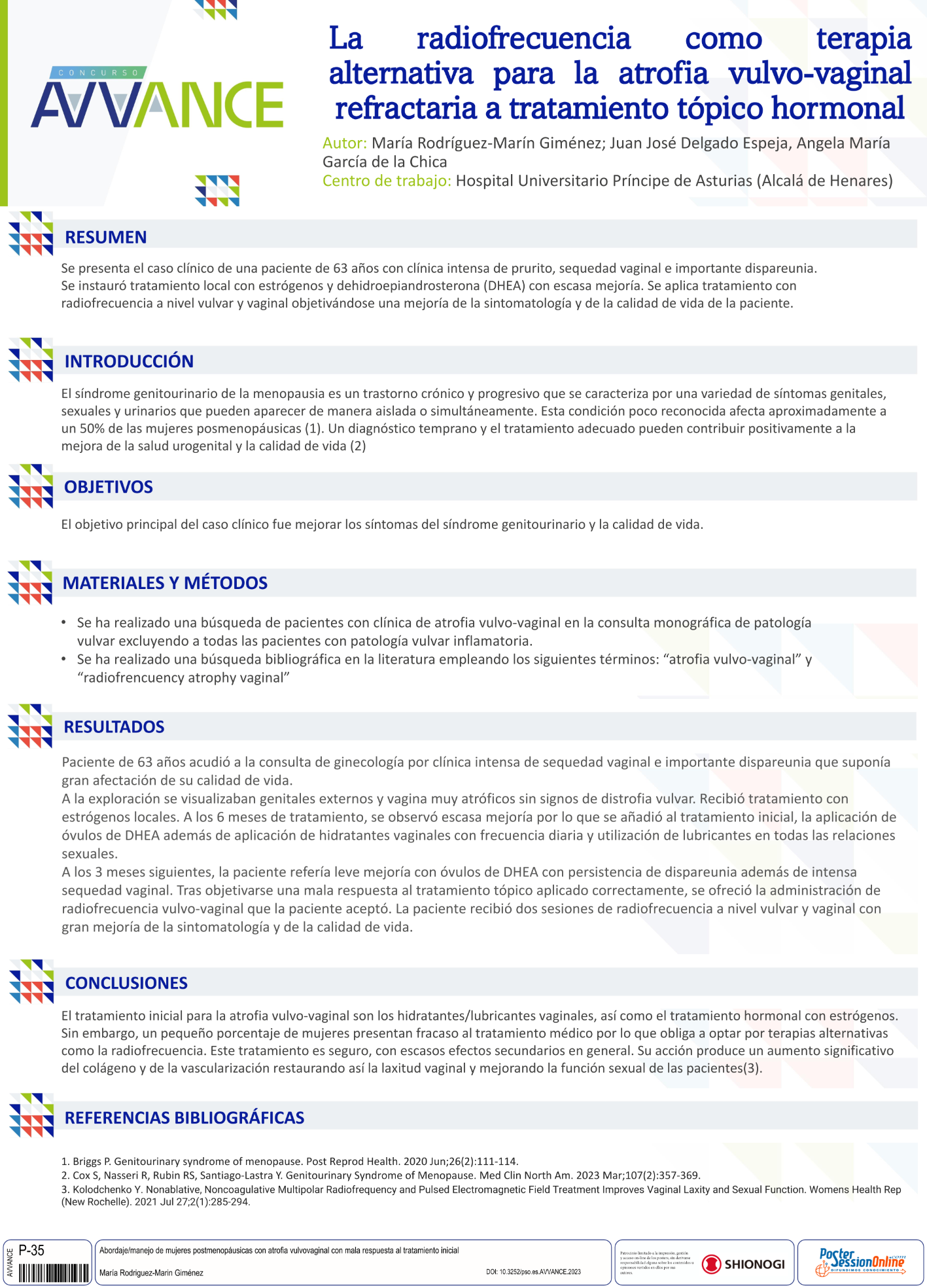
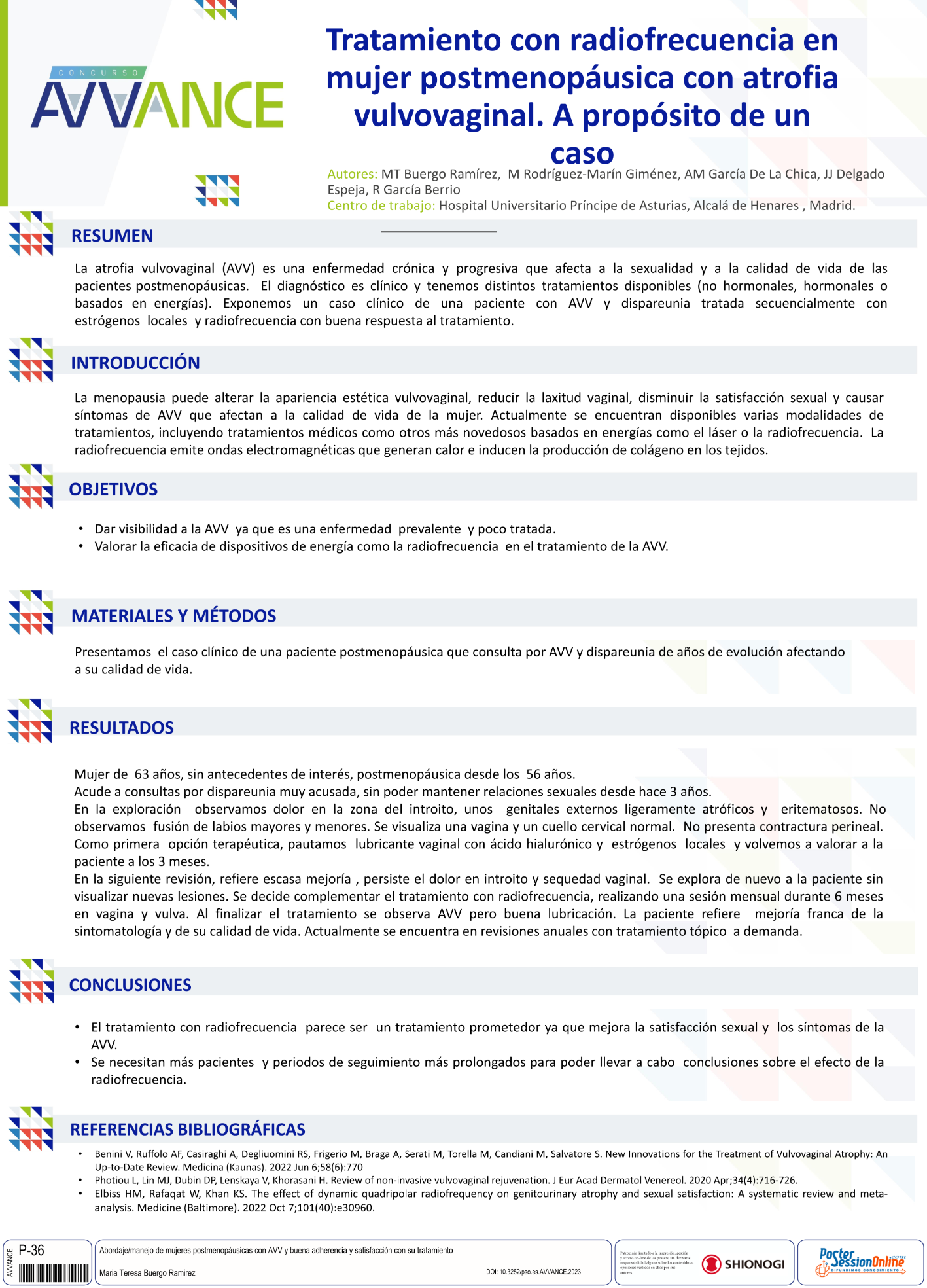
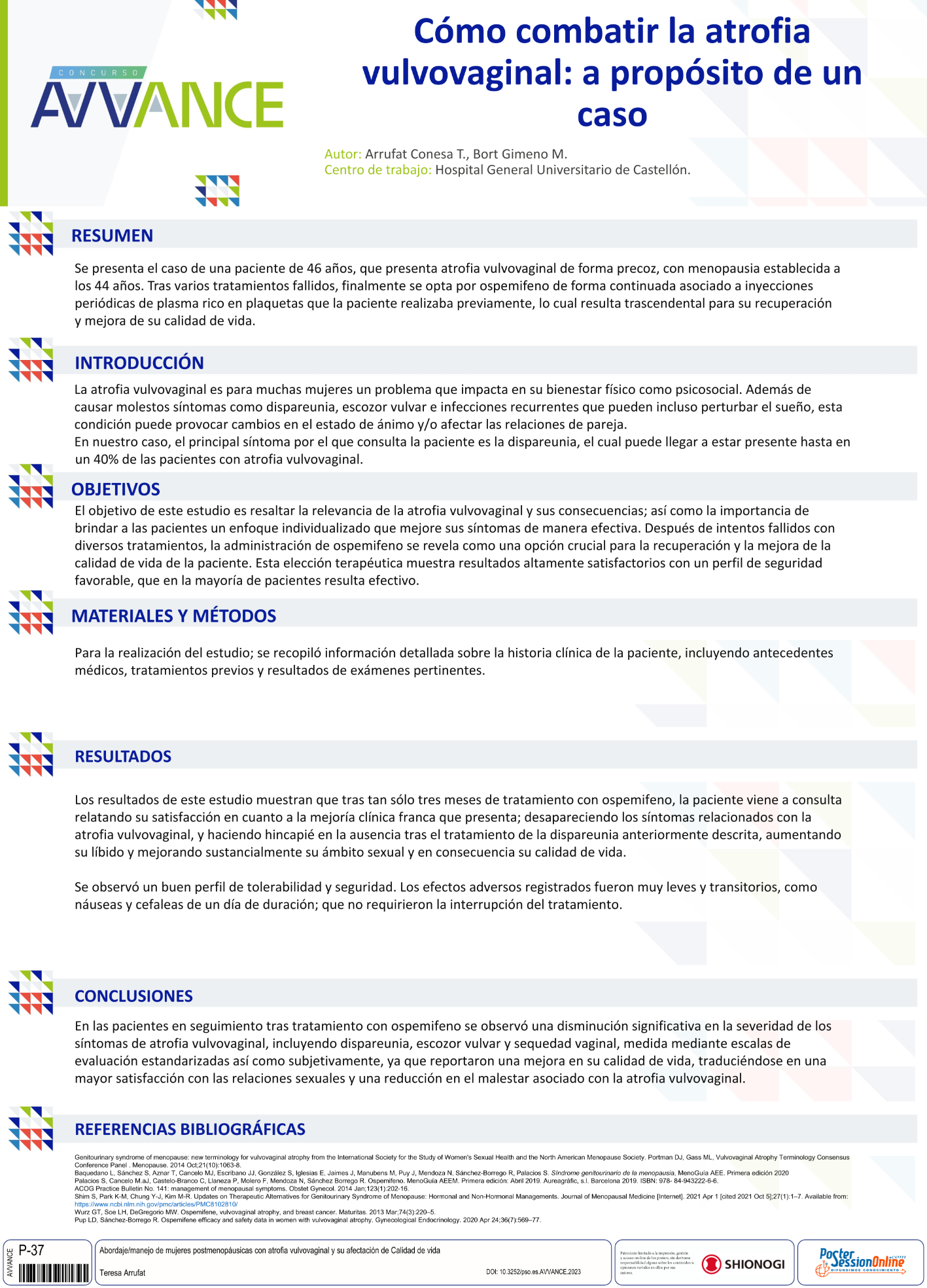
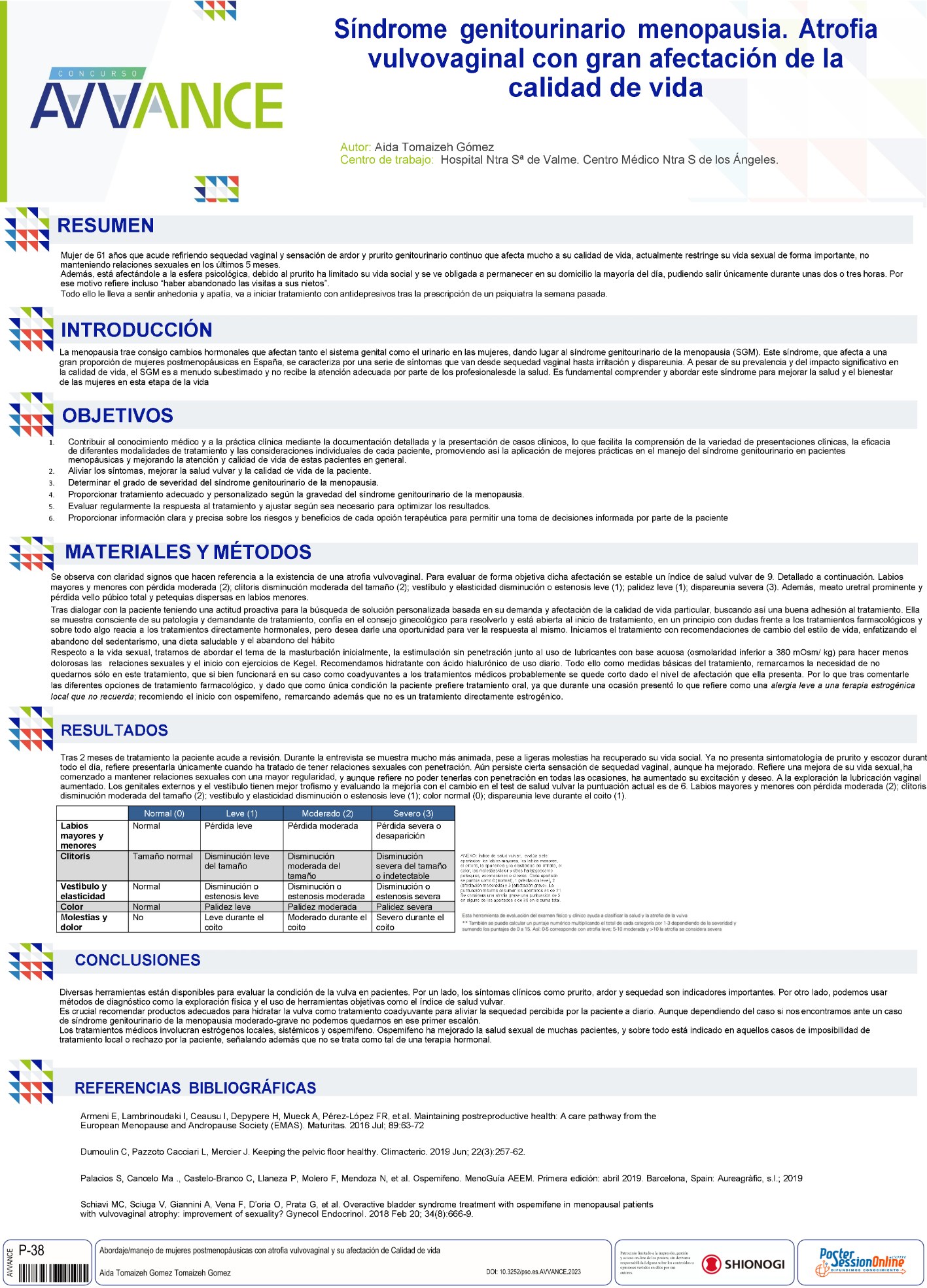
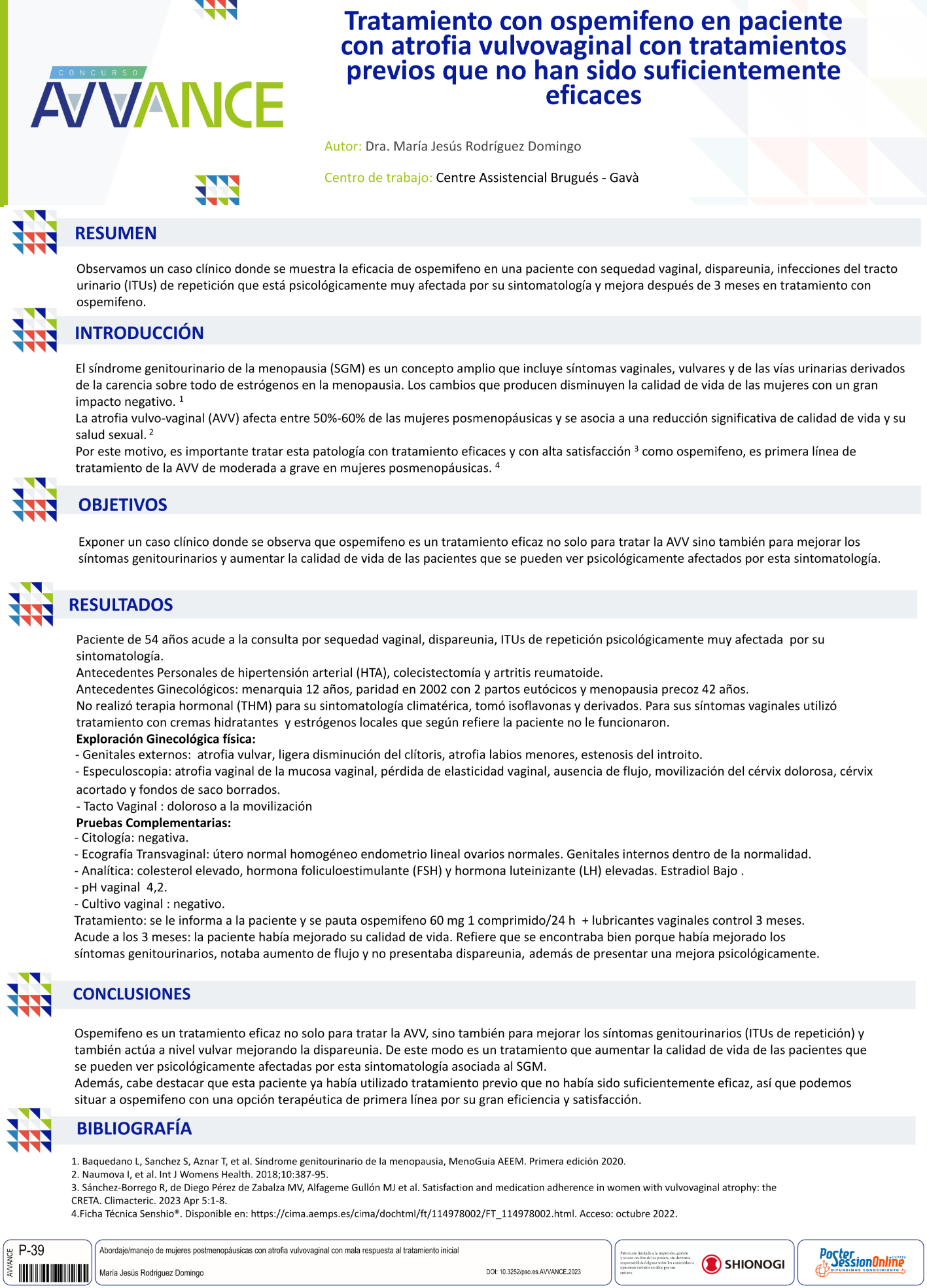
| Caso clínico: Mujer con atrofia vulvova.. | Guillem Boscà Cuquerella.. | Boscà Cuquerella, G.(1); Serr.. | Abordaje/manejo de mujeres postmenopáusi.. | - - | |
| Tratamiento de la AVV en paciente con an.. | Mar Bort Gimeno.. | Bort Gimeno, M.(1); Arrufat C.. | Abordaje/manejo de mujeres con atrofia v.. | - - | |
| Atrofia vulvovaginal y liquen escleroatr.. | Judith de Antonio Ruiz.. | de Antonio Ruiz, J.(1).. | Abordaje/manejo de mujeres postmenopáusi.. | - - | |
| Mutilación genital femenina y síndrome g.. | PABLO ROMERO DUARTE.. | ROMERO DUARTE, P.(1).. | Mujer posmenopáusica con atrofia vulvova.. | - - | |
| NO TODOS LOS PRURITOS SON LIQUEN VULVAR .. | Ángela María García de la Chica.. | García de la Chica, Á.M.(1); .. | Abordaje/manejo de mujeres postmenopáusi.. | - - | |
| SINDROME GENITOURINARIO DE LA MENOPAUSIA.. | Ángela María García de la Chica.. | García de la Chica, Á.M.(1); .. | Abordaje/manejo de mujeres postmenopáusi.. | - - | |
| OSPEMIFENO UNA OPCIÓN TERAPÉUTICA EFICAZ.. | alfredo ramirez espinoza.. | ramirez espinoza, A.(1); Quere.. | Mujer posmenopáusica con atrofia vulvova.. | - - | |
| TRATAMIENTO DEL SÍNDROME GENITOURINARIO .. | Judit Alemany Carro.. | Alemany Carro, J.(1); Ortega E.. | Abordaje/manejo de mujeres con atrofia v.. | - - | |
| Tratamiento con estrógenos locales de la.. | Zurine Raquel Reyes Angullo.. | Reyes Angullo, Z.R.(1); Romero.. | Abordaje/manejo de mujeres postmenopáusi.. | - - | |
| Valoración del impacto en la calidad de .. | eugenio blanes martinez.. | blanes martinez, E.(1); blane.. | Abordaje/manejo de mujeres postmenopáusi.. | - - | |
| La radiofrecuencia como terapia alternat.. | María Rodriguez-Marin Giménez .. | Rodriguez-Marin Giménez , M.(1.. | Abordaje/manejo de mujeres postmenopáusi.. | - - | |
| Tratamiento con radiofrecuencia en mujer.. | Maria Teresa Buergo Ramirez.. | Buergo Ramirez, M.T.(1); Rodrí.. | Abordaje/manejo de mujeres postmenopáusi.. | - - | |
| Cómo combatir la atrofia vulvovaginal: a.. | Teresa Arrufat .. | Arrufat, T.(1); Bort Gimeno, M.. | Abordaje/manejo de mujeres postmenopáusi.. | - - | |
| Sindrome genitourinario menopausia. Atro.. | Aida Tomaizeh Gomez Tomaizeh Gomez.. | Tomaizeh Gomez Tomaizeh Gomez,.. | Abordaje/manejo de mujeres postmenopáusi.. | - - | |
| Tratamiento con Ospemifeno en paciente c.. | María Jesús Rodriguez Domingo .. | Rodriguez Domingo , M.J.(1).. | Abordaje/manejo de mujeres postmenopáusi.. | - - | |
Abstract
Thunderstorm-related asthma in patients sensitised to olea europaea pollen: twenty emergency department visits for asthmatic symptoms in one single day Losappio, Laura1; Heffler, Enrico2; Falco, Antonio1; Contento, Francesco1; Cannito, Cosimo1; Rolla, Giovanni2 1"Dimiccoli" Hospital, Emergency Department, Barletta, Italy; 2University of Torino - AO Mauriziano "Umberto I", Allergy and Clinical Immunology, Torino, Italy
Background: Associations between thunderstorm and asthma morbidity have been reported in several countries. Common to all epidemics of thunderstorm-related asthma is a significant increase in atmospheric allergen load during and immediately after a thunderstorm. Sensitization to Alternaria species or to grass and parietaria pollens has been suggested to play a key role in thunderstorm-related asthma. The only reported event of thunderstorm-related asthma in Mediterranean area was attributed to sensitization to parietaria pollen.
Method: here we describe a series of 20 patients who presented to Emergency Department in Barletta (94,000 inhabitants), Puglia (Italy) for sudden and severe asthmatic symptoms between May 27th and 28th 2010 (from15:36 to 5:02), immediately after a violent thunderstorm which occurred following a very hot morning (mean temperature: 29°C). All the patients have been subsequently visited by an allergist and underwent allergological work-up which included skin prick tests and a careful clinical history. Local pollen counts were available.
Result: Between May 10th and June 10th 2010, 86 Emergency Department asthma visits were recorded, 20 of them during the study day. Patients' mean age was 44.25 +/- 18.5 years (range: 9-81), 8/20 females, 2 smokers, 16 with a previous history of known respiratory allergy. Only two patients regularly took anti-asthma drugs. All 20 patients were sensitized to Olea europaea pollen, 7 of whom were monosensitized. Ten patients were sensitized to grass, 7 to parietaria, 5 to compositae, 5 to cypress, 5 to house dust mites, 3 to dog and 1 to cat danders. No patient was sensitized to Alternaria. Mean pollen count was 17 granules/m3 for Olea europaea, 6 granules/m3 for grass pollen.
Conclusion: This is, in our knowledge, the second epidemic of thunderstorm related asthma described in Mediterranean area and the first one in which sensitization to Olea europaea played a key-role. In conclusion, our report indicates that thunderstorm asthma may involve different allergens (not only fungal spores and grass or parietaria pollen) in different geographic areas, depending on the seasonality of thunderstorms and allergenic pollen.